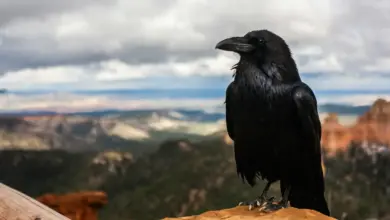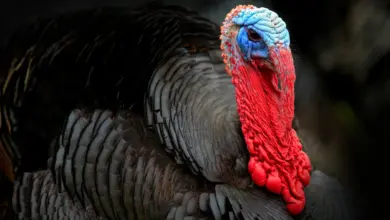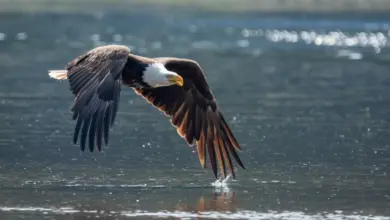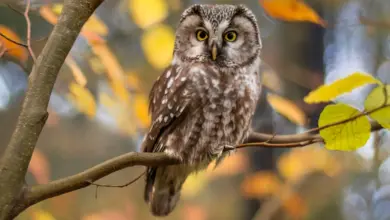What Eats An Ostrich?
What Eats An Ostrich? What Do Ostriches Eat?
Introduction
The magnificent ostrich is one of the most remarkable creatures seen in Africa’s vast and wild landscapes.
The ostrich, the most enormous flightless bird in the world, stands tall and attracts attention with its beautiful plumage, muscular legs, and commanding presence.
But even with its powerful physique and seeming unbeatable size, the ostrich is not immune to the complex game of predator and prey in its natural environment.
This article explores the intriguing query, “What eats an ostrich?” In addition to its reputation as a fierce animal that can escape most predators due to its exceptional speed, the ostrich confronts various difficulties from crafty predators who have learned to evade its defenses.
We discover the intricate interactions between the ostrich and its predators as we piece together the stories of predation on the vast African savannas.
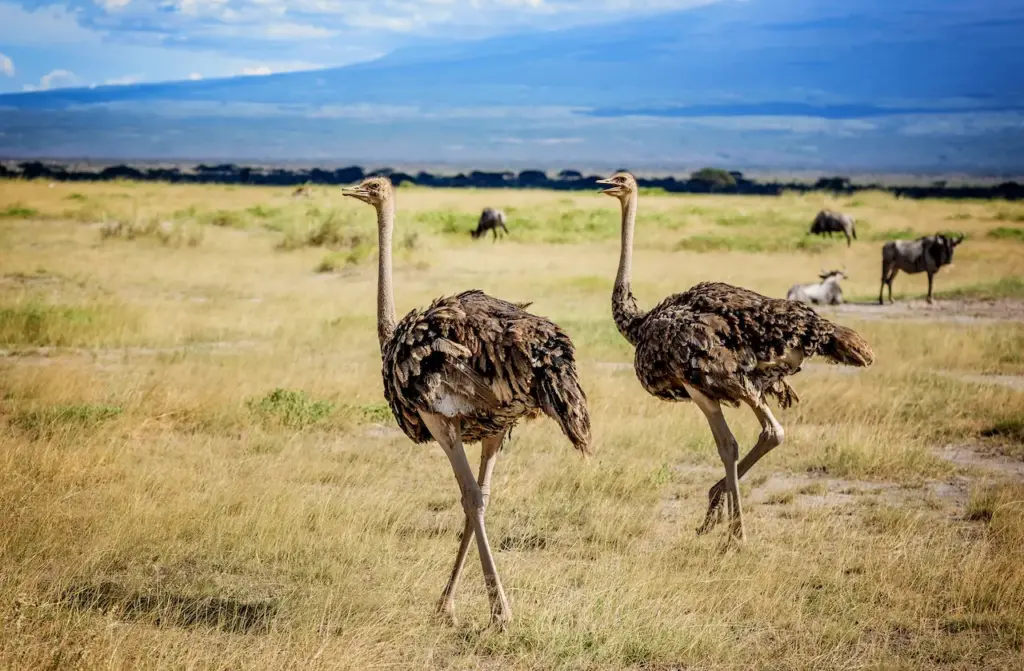
Predators Of Ostrich
Lions
In Africa’s vast savannas, lions are one of the most dominant predators of ostriches. They are magnificent, powerful animals. The interaction between ostriches and lions highlights the difficulties encountered by the most enormous flightless bird in the world. It offers an intriguing window into the complexities of predator-prey relationships.
To take down an ostrich, lions, recognized for their social organization and cooperative hunting methods, use their power, agility, and collaboration together. When hunting such massive prey, these big cats usually hunt in groups to increase their chances of success.
Lions are patient hunters who spend much time sizing up their prey from a distance. Because of their excellent vision, they can distinguish between individual ostriches in a flock and select possible targets based on age, health, and distance from the flock.
Lions are adept at precisely coordinating their moves after locating a suitable victim. Together, they use cunning and strategy to approach as closely as possible without letting the ostriches know they’re there. A well-planned strategy is essential to a successful ambush.
Once the ostrich is rendered unconscious, additional lions charge in to deal lethal strikes. A popular tactic is to go for the ostrich’s neck, where a strong bite may swiftly render it helpless and enable a victorious death.
Lions are gregarious animals even while feeding, as they frequently eat the ostrich together after a successful hunt. By working together, we can ensure that the pride can effectively consume the big bird with the least amount of trash.
Cheetah
With its towering stature and fantastic speed, the ostrich has a dangerous foe in the vast African savannas: the cheetah. Being the swiftest land mammal, the cheetah uses ingenious tactics and unparalleled agility to track down and apprehend the mighty ostrich.
Examining the cheetah’s predatory tendencies delves into the traits and actions that set it apart as a fierce foe to the giant non-avian bird in the world.
Cheetahs are highly valued for their extraordinary quickness, agility, and excellent sense of smell. These predators take advantage of the ostrich’s fantastic acceleration and burst speed when hunting them.
Cheetahs are good at closing the distance between themselves and their prey since they can accelerate to 70 miles per hour in a few seconds.
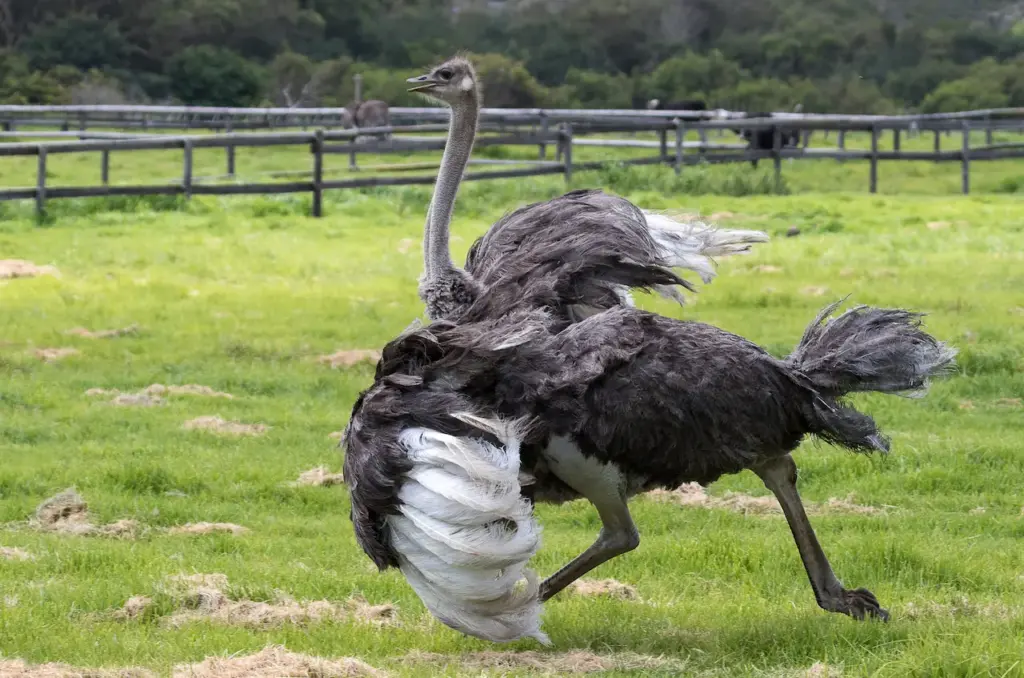
Usually, the hunt starts when the cheetah approaches the ostrich quietly while using the surrounding environment as cover. When it gets near, the cheetah lets go of its powerful acceleration and charges at the ostrich with unmatched speed. With the element of surprise and the cheetah’s swift pursuit, the ostrich doesn’t have much time to respond.
Throughout the pursuit, the cheetah hunts for weak spots on the ostrich’s body. The rear of the neck becomes the main target since a sound bite here can rapidly render the bird unconscious. The cheetah’s solid jaws and pointed teeth are ideally suited to deliver a quick and potent bite, guaranteeing a takedown.
Cheetahs are exceptionally versatile hunters, and their physical characteristics help them search for ostriches.
Their long tail helps balance and steering during sharp curves, and their slim, aerodynamic construction reduces air resistance during high-speed chases. Their acute vision also aids them in evaluating the ostrich’s movements and selecting the best times to attack.
Hyenas
With their adaptable and opportunistic hunting habits, hyenas represent a severe danger to ostriches in various African environments. Though their skill at scavenging is well-known, these crafty and dangerous carnivores can also chase down their prey, which includes the mighty ostrich.
Hyenas are renowned for their tenacity and capacity for pack coordination. Hyenas frequently take advantage of their more significant numbers when hunting ostriches. They could stalk the ostriches, looking for the right time to attack. Hyenas are cunning predators who take advantage of their prey’s weaknesses with a careful approach.
Hyenas are fierce predators because they work in tight, well-organized groups. They can outwit and outmaneuver the ostrich thanks to their group mentality. During a hunt, individual hyenas in the pack can have specific responsibilities to play, including flanking the ostrich to force it toward other hyenas’ waiting jaws.
The formidable jaw is one of a hyena’s most essential tools. A hyena’s biting power is strong enough to break bones, rendering an ostrich instantly defenseless. When they attack, they frequently seek to quickly take down the vast bird by striking its legs or throat. Hunting efficiency is attributed to hyenas’ ability to bite forcefully and strategically place their bites.
Although hyenas are renowned for their hunting skill, they are also scavengers who seize opportunities. When ostrich carcasses are accessible, hyenas will eat them without hesitation. This two-pronged feeding strategy demonstrates how adaptable hyenas are and how they may use different food sources.
African Hunting Dogs
African hunting dogs, or Lycaon pictus as they are formally called, are well recognized for their excellent social structure, cooperation, and hunting tactics. These canines have developed into fierce predators via their sophisticated dance of survival on the African savannas; the ostrich is only one of their numerous prey.
African hunting dogs are distinguished by their eye-catching coat patterns, which are a mosaic of white, yellow, and black. These dogs have broad, rounded ears and a lean, muscular frame; they are more suited for endurance training than fighting. Their extraordinary endurance is valuable when hunting fast-moving targets such as ostriches.
African hunting dogs live in close-knit groups headed by an alpha couple and are highly gregarious. They can work together efficiently during hunts thanks to their pack structure, which makes them among the most successful predators in the wild. The pack uses a combination of speed, cooperation, and strategy to hunt ostriches.
The dogs find possible prey by using their keen sense of smell. When an ostrich is seen, the pack moves in unison to surround and follow it. African hunting dogs are renowned for their unwavering endurance, which enables them to pursue their quarry until it runs out of gas.
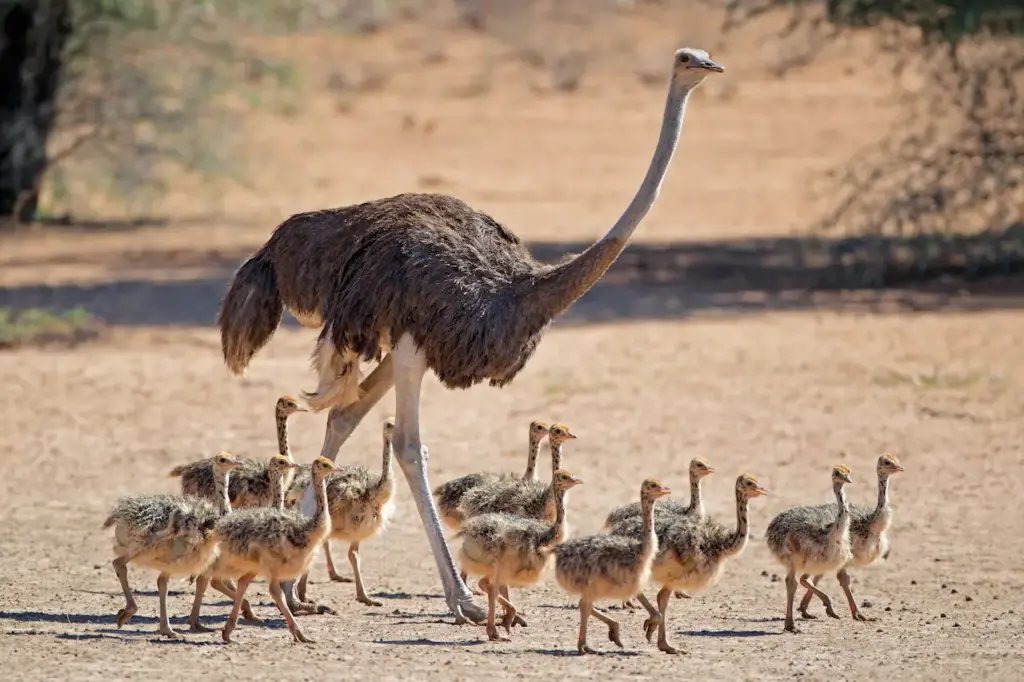
Conclusion
The ostrich confronts a variety of severe predators in its native habitat despite its size and power. The ostrich has to manage a complicated network of hazards, including the coordinated efforts of lions, the lightning-fast sprints of cheetahs, and the cunning hunting techniques of hyenas and African hunting dogs.
Comprehending these processes illuminates the precarious equilibrium of ecosystems and the complex interactions between predators and their prey. The ostrich is still a vital component of the complex web of life in the African savannas, even as it continues to overcome the obstacles posed by its predators.

